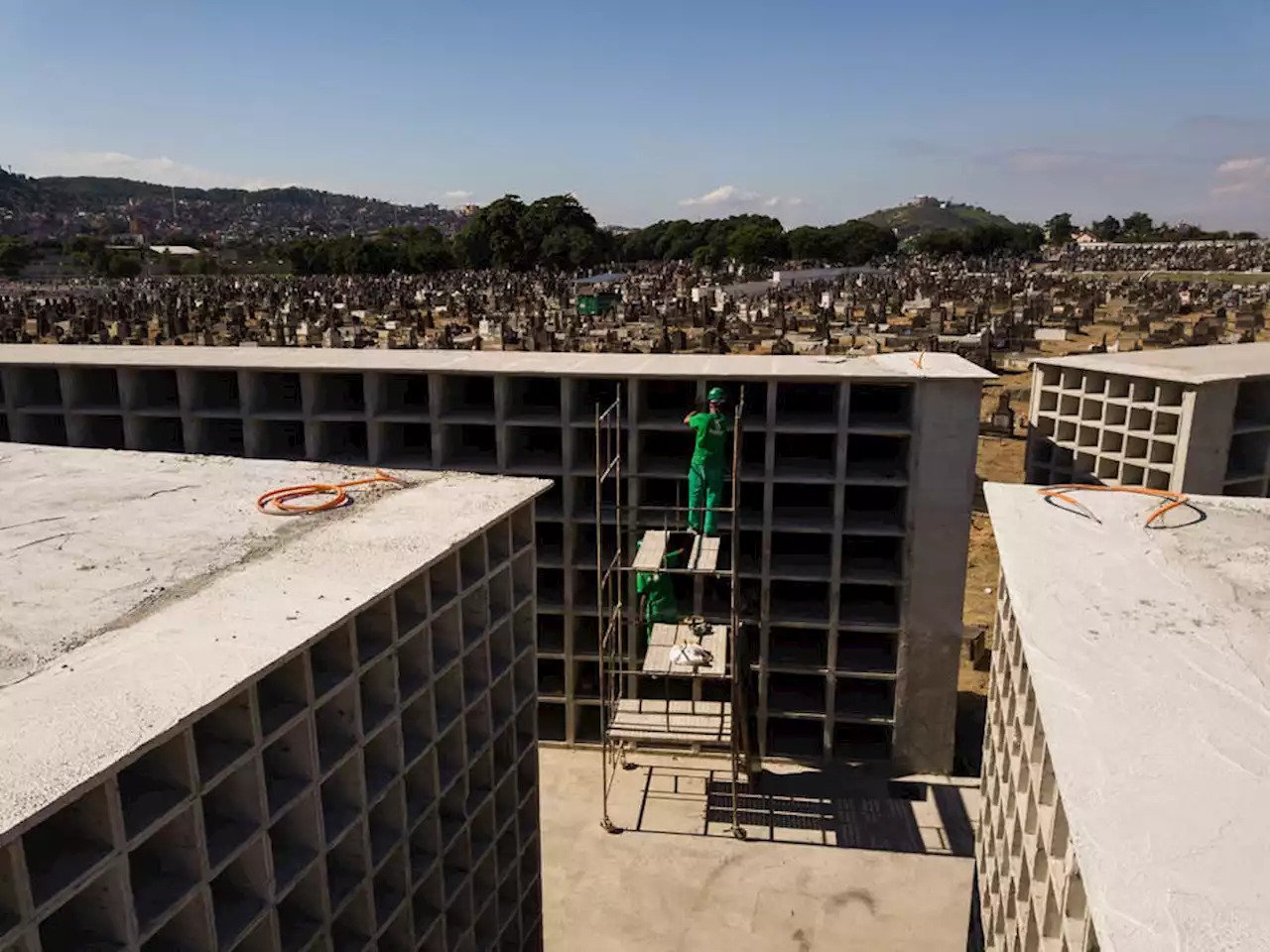RIO DE JANEIRO, BRAZIL – With the coronavirus pandemic, the Irajá and Inhaúma cemeteries in the northern part of Rio are building thousands of vaults to house the dead. The newspaper O Estado de S. Paulo reported that a drone flew over the Inhaúma region on Tuesday afternoon, April 28th, and found that at least 30 concete blocks, of varying sizes, are being erected. Each one can hold hundreds of bodies.
In Irajá, the TV Globo helicopter also captured constructions. There are 24 blocks now erected and, as in the case of the other cemetery, each one can house hundreds of bodies.

By Tuesday afternoon, Rio had recorded 738 deaths by covid-19. However, in addition to these deaths, there is also an increase in the number of deaths by “undetermined causes ” in the Rio de Janeiro notary offices registering deaths certificates. There were 310 between late February, when the country had the first coronavirus infection, and April 18th. This was a 52-fold increase compared to the same period in 2019, when only five were recorded.
In addition to those with undetermined causes, deaths from severe acute respiratory syndrome (SARS) also skyrocketed in Rio, according to public records. There were 130, compared to six in the same period last year. This represents a 21-fold increase.
In this scenario, the Rio de Janeiro city government on Tuesday issued a measure that authorizes funeral companies to conduct their own death records in order to prevent an overburden in notaries.
The Rio Pax concessionaire, which manages Irajá and Inhaúma cemeteries, was asked to provide the exact number of new vaults, but failed to answer.
Exhaustion in Volta Redonda
The last hope for covid-19 patients in need of ICUs in Rio, the public hospital, in Volta Redonda, in the southern part of the state, is facing the growing reduction of places, caused by the transfer of infected patients from other municipalities – including the capital, 130 kilometers away. The increase was rapid: in three days, between Friday and Monday, the occupation rate rose from 51 to 77 percent.
According to reports from professionals working in the hospital, there are three wards with a total of 50 places. There are few empty beds left – there were six at the weekend, but that number varies very often because of the deaths of hospitalized patients. On Monday, there were 326 patients waiting to be transferred to ICUs in the state.
Health professionals, who prefer to remain anonymous, also complain about the lack of adequate protective equipment. With no protective suits of the most suitable type to be worn in ICUs and to treat patients of a highly contagious disease such as covid-19, they improvise cloaks or even surgical overalls, which have a lower degree of protection.
According to these employees faced with the risk of contamination, co-workers prefer to stop working at the hospital. The teams are short of staff: 12 professionals resigned in a matter of days, employees say. As a result, one nurse – who in standard conditions would be in charge of two patients – attended seven in his shift.
The number of deaths has also crowded the morgue, with space for 27 bodies. The families of most of the deceased live in the capital and have no financial means to pay for the transfer of the bodies.
As a result, some bodies remain in the morgue for up to five days. Given the prospect of crowded morgues, the government has provided cold containers to store bodies.
Sewers
Fiocruz researchers have detected the presence of the novel coronavirus in the sewers of Niterói, in the metropolitan region of Rio de Janeiro. The study is insufficient to determine whether or not the virus can be passed on through the feces. However, it helps to give a sense of how it can spread, “allowing identification of regions with the presence of cases of the disease, even those not yet reported in the health system”.
“This study confirms the significance of wastewater-based surveillance as a promising approach to understanding the occurrence of the virus in a given geographical region,” points out virologist Marize Pereira Miagostovich, in charge of the Fiocruz study.
Source: O Estado de S. Paulo

